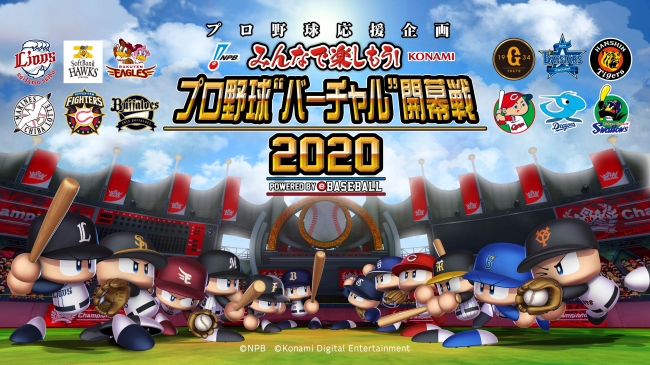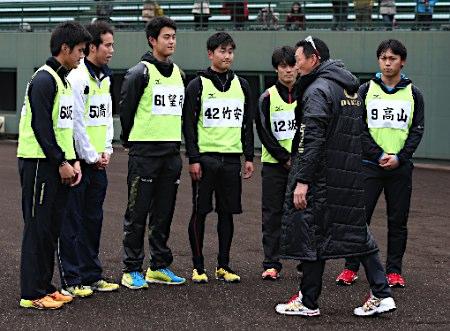
With the status of the 2020 Major League Baseball season still uncertain, many have turned their attention overseas, where professionals are already swinging their bats (and/or using them as bunting implements) or wearing out their pitching shoulders. Taiwan got started first, and then Korea, but for those who want some recognizable names and faces, or at least players who could someday make the transition to the bigs, those leagues may not quite fit the bill. And so we turn our eyes to Japan, where the 2020 Nippon Professional Baseball (NPB) season is set to kick off on June 19.
Baseball is baseball… right? Well, yes and no. Here, the game is called yakyu (野球 = field ball). Sure, they still put 9 players on the diamond and the distances between the bases are the same. But how the game is played – and watched – differs in ways you wouldn’t expect, making your baseball (ahem, yakyu) experience in Japan entirely different than it was back in the game’s motherland.
First, let’s look at some fundamental differences.
Learning the Fundamentals
Practices in Japanese ball are long, drawn-out, and year-round. Without going into detail about what is practiced (most import players are first shocked by what they are forced to do), here’s when practicing goes down (something almost every import mentions about training schedules). January is “voluntary” training (covered by media, even if the player goes overseas to work out). February is spring (winter?) training all month long. March has teams warming up by playing 20 or so exhibition games. Normally, this is when the 143-game regular season starts. (COVID-19 had other things in mind, though.) Then after the season ends (late October), they have fall camp in November. Practices continue in December as well. Players (well, most) finally take time to rest from December 25 to January 1. So you could say the players here come ready to play. Or practice. Every. Single. Day.

Coaches Dictate Everything
As you can probably guess from the above, coaches and trainers monitor and mentor players around the calendar. (Exception: coaches are not allowed to “train” players in January, though they are free to watch.) This is true on both macro and micro scales. Players seldom get the green light to use their instincts during gameplay. Perhaps it’s the fear of shame/embarrassment/scolding that holds players back from getting creative in their hitting approach, base running, pitching, and more. Speaking of playing it safe and avoiding risky situations, it is not unusual to find teams sacrificing outs to get their players into scoring position, regardless of how early in the game it is, and sometimes with no regard to the score! Even if bunting were to occur in a Major League game, it would not happen until the late innings in a tight game. In Japan, it isn’t uncommon for the sacrifice bunt to be employed by the game’s second batter.
Tie Games!
That’s right, if the game outcome is not decided by the 12th inning, the game is declared a tie. This would be sacrilegious in the West. One of the reasons for ties (I think) is because 95% of fans come to the game using public transportation. If the trains stop running at midnight, the club wants to make sure that every fan, even the ones who traveled 90 minutes to get to the stadium, can make their way home at the end of the game. In the name of consistency, all teams adhere to this rule all year long, even for day games (which, presumably, will end well ahead of the last train out of town).

No doubleheaders
In the event of a rainout, games will almost always be made up at the end of the regular season schedule. This makes for a real imbalance in each team’s end date. Some play on 12-15 consecutive nights in six different cities, while others get 3 days off between games. The last regular season doubleheader in Japan was played in 1998. (There was one scheduled in 2007, but ironically, it got rained out.)
Next, let’s look at things from the fans’ perspective.
Cheering Sections?
Much like the soccer world, the visiting team’s fans have a section or two designated just for them. (I doubt it is to prevent brawls, but it sure gives that minority of fans some peace of mind. That having been said, fan behavior has been quite angelic in the past couple of decades, but history shows there has been crowd violence in the past.) In the case of Japanese baseball, the visitor cheering section is almost invariably in the left-field bleachers. Meanwhile, the right-field bleachers are where the hardcore home fans congregate, because…
Cheering or Choir Practice?
There are cheers/songs customized for each core player in the batting lineup! It’s the fans in the right-field stands who get the whole crowd going. A group of volunteers called the ouendan (応援団) lead the rest of the home fans in singing (and moving) in unison. So when the home team is at bat, the entire stadium is singing a chorus of songs, accompanied by trumpets and drums. This goes on all game long, regardless of the score. (The visiting team’s fans get their turn to sing their team’s cheer songs in the top half of each inning. It’s also impressive, just quieter.)
Take me out to the what???
The seventh-inning stretch is called the Lucky 7. In most parks, fans sing a song and then launch “jet balloons” into the air, creating a symphony of what sounds like 30,000 shrieking bats (the animal, not the hitting tool), as well as a whole lot of saliva-filled rubbers hitting the floor/field some 10 seconds later. Great fun. (Note: Jet balloons will likely not be a thing in 2020, due to the COVID-19 scare. Hard to blame people for not wanting others’ saliva misting down on them.)
Fans clean up after themselves!
Even after the balloon launch, you will see dozens of fans with plastic disposal bags picking up the deflated balloons. Furthermore, no fan leaves their trash (empty cups and plates) behind after the game. Each brings his/her own to a designated trash area near the exit to the stadium. Way to keep it classy!
Come for the baseball, stay for the beer
Beer brought to you by keg-carrying girls. That’s right. They strap a huge barrel on their backs and walk up and down the stairs, waiting for you to wave your hand, smile, and order a brewski. Some stadiums keep track of sales by each beer girl, and the top 3 (or 5?) sport an armband that flaunts their popularity status. I should also mention that some stadiums allow you to bring your own beer to the game – within reason. You need to pour them into paper cups (provided by the park) at the entrance. Food is generally allowed as well.
These idiosyncrasies are just the tip of the iceberg, folks. Baseball in Japan is still baseball, but it comes with all sorts of quirks that will keep you coming back for more. Enjoy your baseball! Nay, your yakyu!
For more information on Japanese baseball, check out the rest of JapanBall!

